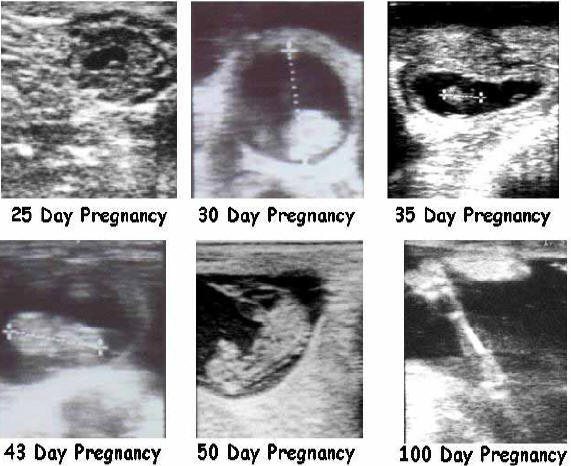
Ultrasound Pregnancy Diagnosis in Cows: A Comprehensive Guide
Introduction
Ultrasound pregnancy diagnosis is a crucial aspect of cattle management, enabling farmers to determine the reproductive status of their cows and optimize breeding programs. This non-invasive technique provides valuable information about fetal development, allowing for timely interventions and improved reproductive efficiency. This article delves into the principles, techniques, and applications of ultrasound pregnancy diagnosis in cows, empowering farmers with the knowledge to enhance their herd’s productivity.
Principles of Ultrasound Pregnancy Diagnosis
Ultrasound waves are high-frequency sound waves that can penetrate tissues and create images of internal structures. In pregnancy diagnosis, ultrasound is used to visualize the uterus and detect the presence of a fetus. The sound waves are transmitted through a transducer placed on the cow’s abdomen, and the reflected echoes are processed to create a real-time image on a monitor.
Techniques for Ultrasound Pregnancy Diagnosis
There are two main techniques used for ultrasound pregnancy diagnosis in cows:
-
Transrectal Ultrasound: This method involves inserting a transducer into the cow’s rectum. It provides a clear view of the uterus and allows for early pregnancy detection (as early as 28-30 days after breeding).
-
Transabdominal Ultrasound: This method involves placing the transducer on the cow’s abdomen. It is less invasive than transrectal ultrasound but may have lower accuracy, especially in early pregnancy.
Stages of Fetal Development and Ultrasound Findings
The ultrasound findings during pregnancy vary depending on the stage of fetal development:
-
Early Pregnancy (28-45 days): The presence of a fluid-filled vesicle (amniotic vesicle) in the uterus indicates early pregnancy.
-
Mid-Pregnancy (45-70 days): The embryo becomes visible as a small, round structure within the amniotic vesicle.
-
Late Pregnancy (70-90 days): The fetus develops distinctive features, including the head, limbs, and internal organs.
-
Term Pregnancy (90-280 days): The fetus is fully developed and occupies a significant portion of the uterus.
Applications of Ultrasound Pregnancy Diagnosis
Ultrasound pregnancy diagnosis has numerous applications in cattle management, including:
-
Early Pregnancy Detection: Identifying pregnant cows early allows for timely management decisions, such as separating them from the breeding herd and providing appropriate nutrition.
-
Monitoring Fetal Development: Regular ultrasound examinations can track fetal growth and identify any abnormalities or complications.
-
Determining Fetal Number: Ultrasound can determine the number of fetuses present, which is important for multiple births and embryo transfer programs.
-
Evaluating Fetal Viability: Ultrasound can assess fetal heart rate and movement, indicating fetal viability.
-
Diagnosing Reproductive Disorders: Ultrasound can help diagnose reproductive disorders, such as cystic ovaries, uterine infections, and fetal mummification.
Equipment and Training
Performing ultrasound pregnancy diagnosis requires specialized equipment and training. The ultrasound machine should have high-quality imaging capabilities and appropriate transducers for transrectal and transabdominal examinations. Technicians must undergo thorough training to develop the necessary skills and knowledge to interpret ultrasound images accurately.
Accuracy and Limitations
Ultrasound pregnancy diagnosis is generally highly accurate, but factors such as operator experience, equipment quality, and cow factors (e.g., body condition) can influence accuracy. Limitations include:
-
Early Pregnancy Detection: Early pregnancy detection may be challenging, especially with transabdominal ultrasound.
-
False Positives: In rare cases, non-pregnant cows may exhibit structures that resemble a fetus.
-
Operator Dependency: The accuracy of ultrasound diagnosis relies heavily on the skill and experience of the technician.
Conclusion
Ultrasound pregnancy diagnosis is an essential tool for cattle management, providing valuable information about the reproductive status of cows and enabling timely interventions. By understanding the principles, techniques, and applications of ultrasound pregnancy diagnosis, farmers can optimize breeding programs, improve reproductive efficiency, and ensure the health and productivity of their herds. Regular ultrasound examinations, coupled with proper record-keeping and analysis, empower farmers to make informed decisions and enhance the profitability of their cattle operations.